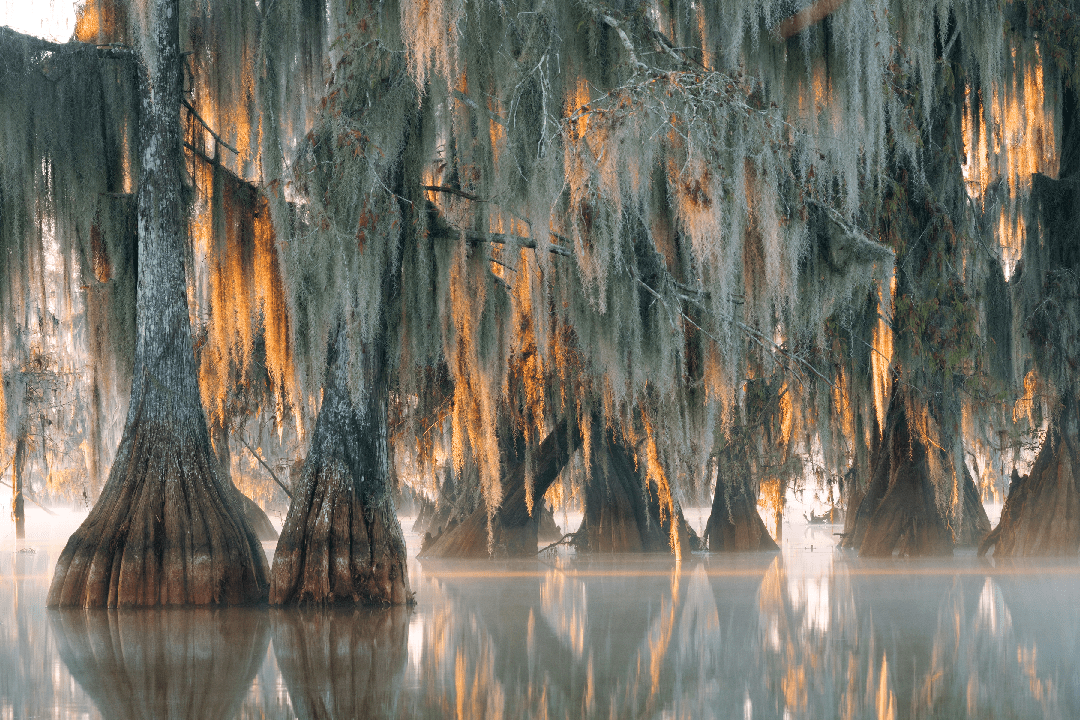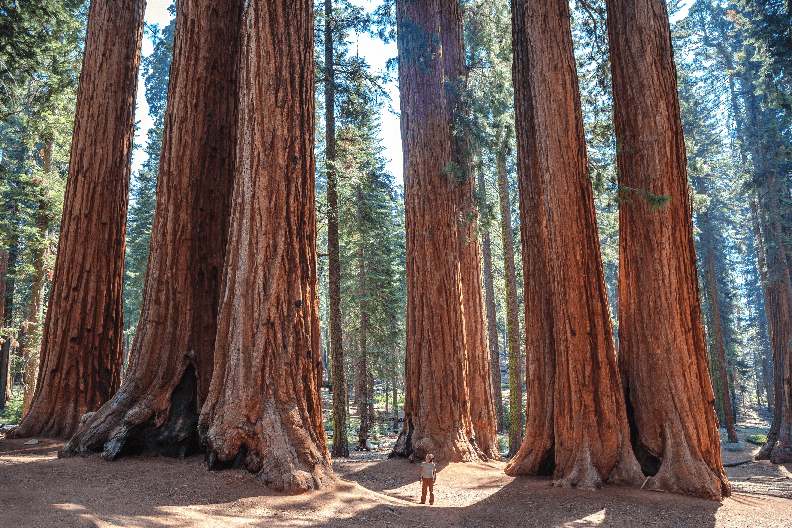The cypress family (Cupressaceae) includes the junipers, arborvitae and redwoods and up to 30 genera. Of the members, a few have become notable on account of their size, age and uniqueness. Here we will discuss five members of the family: the dawn redwood, the coast redwood, the giant sequoia, the bald cypress and the Chinese swamp cypress. These cypresses occur in two distinct sub-families, which are:
- Sequoioideae
- Metasequoia glyptostroboides (dawn redwood)
- Sequoia sempervirens (coast redwood)
- Sequoiadendron giganteum (giant sequoia)
- Taxoioideae
- Taxodium distichum (bald cypress)
- Glyptostrobus pensilis (Chinese swamp cypress)
Though in different sub-families, the dawn redwood, bald cypress and Chinese swamp cypress are deciduous in habit, whereas coast redwood and the giant sequoia are evergreen. The dawn redwood and the Chinese swamp cypress are native to China, whereas the bald cypress, the coast redwood and the giant sequoia are native to the US. Bald cypress and the Chinese swamp cypress are native to the southeastern regions of their respective countries, and both will develop knees (neumatophores) when growing in water, thought to aid in gas exchange to the roots. The genus name, Sequoia, is in honor of the native American Cherokee Chief Sequoyah. The table below, summarizes the species attributes.
| Species | Common Name | Origin | Habit | Habitat |
| Metasequoia glyptostroboides | Dawn redwood | China | Deciduous | Moist acidic soils |
| Sequoia sempervirens | Coast redwood | United States | Evergreen | Temperate rain forest |
| Sequoiadendron giganteum | Giant sequoia | United States | Evergreen | Cool climates, adequate soil moisture |
| Taxodium distichum | Bald cypress | United States | Deciduous | Wide range of soils, grows in water |
| Glyptostrobus pensilis | Chinese swamp cypress | China | Deciduous | Rare species, like bald cypress, will grow in water |
Here are some added details to this interesting group of conifers.
Metasequoia glyptostroboides (dawn redwood) was discovered in China in 1943. A newly discovered species, was only known in the fossil record, living 5 million years ago! The paleo-botanist who described the fossil, Miki Shigeru named it Metasequoia (like a sequoia). In 1948 Hu and Zeng named what was known as the “water fir”, glyptostroboides for its resemblance to the Chinese water cypress (Chaskey, 2023). Along with the native bald cypress, the Chinese water cypress and dawn redwood are deciduous conifers. Dawn redwood tolerates a wide range of soil types, preferring moist, slightly acidic soils. It is a fast-growing tree to 100’ high and 25’ wide, with attractive reddish-bronze fall color. Its’ branchlets are opposing, rather than alternate. It is hardy to zone 4. The tree thrives in full sun, with few pest problems.

Glyptostrobus pensilis (Chinese swamp cypress) is a native of southeastern China. An endangered species, its leaves are spirally arranged and deciduous. Like the related Taxodium, when grown in water, it develops knees (pneumatophores), which are thought to facilitate gas exchange to the roots.
Taxodium distichum (bald cypress) is native to the southeastern United States. It is adaptable to a wide range of soil types, and has an attractive coppery red fall coloration. Its leaves are alternate. It forms knees when grown in water, but tolerates a wide range of growing conditions. It will grow in full sun to partial shade. Bald cypress will grow in acidic to alkaline soils, tolerating saline conditions. It will grow in sandy, loamy and clay soil types. It is a slow growing, but long-lived tree, attaining heights of over 100 feet. It is hardy to USDA zone 4. The genus name Taxodium alludes to the similarity of the leaves to the yew (Taxus species).

Sequoia sempervirens (coast redwood) are evergreen, long-lived (1200-2200+ years) species and the tallest trees on earth (>380 feet)! Its native habitat is a narrow strip from southwestern Oregon to Monterey County, California. They lived on earth during the Cretaceous, 144 to 166 million years ago (Chaskey, 2023). Growing typically between 100 to 3000 feet above sea level, in mountainous terrain, the tree is able to capture moisture off the oceans. In the valleys, they grow along streams and absorb moisture through foliage from coastal fog. It produces terpenoids and tannic acids that resist insect attack, fungal infection and rots. Today the tree is threatened by climate disruption and in recent years, fires have claimed a number of them.

Sequoiadendron giganteum (giant sequoia) are the most massive trees on earth occurring naturally in groves on the western slope of the Sierra Nevada mountains, California. The giant sequoia grows on average to a height of 280 feet with diameters of 26 feet. They are among the oldest living organisms on earth; the oldest know is 3200 years old (NCSU.edu)!
The tree is evergreen and its sap contains a significant amount of tannic acid. Though naturally fire resistant (its cones open after a fire), it is threatened by past practices of fire suppression and drought, making them much more vulnerable to crown fire. The tree can be cultivated, and will withstand cold temperatures as low as -25F as long as it roots are well protected. Outside of their range, they are grown successfully in the pacific northwest and in the southeastern US. They are best grown in cool climates, with adequate soil moisture. They will not tolerate drastic temperature changes or clay soils.

In an upcoming blog, we’ll tell the story of one giant, the Waterfall tree, a coast redwood and efforts that were made to preserve the DNA of the ancient tree.
Join us next week when we talk about preserving redwood trees.
~ Signing off for now, Joe
References
Chaskey, S. 2023 Soil and Spirit. Milkweed Editions. Minneapolis, MN. 243 pp.
https://www.conifers.org/cu/Glyptostrobus.php (webpage accessed on 8/25/2023)
https://plants.ces.ncsu.edu/plants/sequoia-sempervirens/ (webpage accessed on 8/25/2023)
https://plants.ces.ncsu.edu/plants/sequoiadendron-giganteum/ webpage accessed on 8/25/2023)

